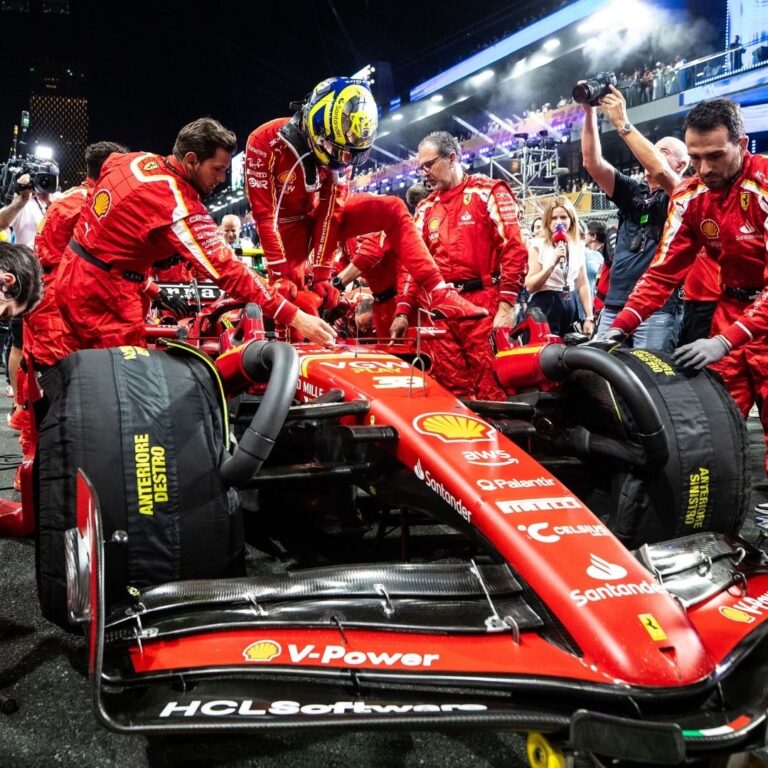Formula One (F1) racing stands as the zenith of motorsport, a complex arena where success hinges on the fusion of advanced technology, driving prowess, and strategic teamwork. A modern F1 team is a substantial operation, employing between 300 to 1,200 specialized individuals. This vast workforce highlights the intricate nature of F1, where even minor competitive advantages can determine victory. These organizations are finely tuned systems, where each component is crucial to achieving the F1 Drivers’ and Constructors’ Championships. The demands on these teams are immense, mirroring the drivers’ physical and mental fortitude.
To succeed, F1 teams are structured into key divisions: Engineering, Race Operations, Commercial, and Management. Each division comprises numerous roles requiring specific expertise.
Key Departments and Roles:
| Department | Key Roles |
|---|---|
| Engineering | Chief Technical Officer, Head of Aerodynamics, Head of Power Unit, Design Engineers |
| Race Operations | Team Principal, Race Director, Race Engineers, Performance Engineers, Strategists, Mechanics |
| Commercial | Sponsorship Manager, Marketing Manager, Communications Manager |
| Management | CEO, Chief Financial Officer, Chief Commercial Officer, Chief Communications Officer, Technical Director, Sporting Director, Head of Race Engineering |
| Pit Crew | Wheel Gunners, Tyre Off Crew, Tyre On Crew, Front Jack Operator, Rear Jack Operator, Car Stabilizers, Front Wing Adjuster, Lollipop Man (or equivalent), Backup Jack Operators |
The Engineering Division: Driving Innovation and Performance
The Engineering Division is the core of an F1 team, responsible for car design, development, and improvement. It’s split into the factory team (long-term design) and the track team (race performance optimization).
- Chief Technical Officer (CTO): Coordinates all engineering activities, ensuring car performance, legality, safety, and reliability.
- Head of Aerodynamics: Develops aerodynamic concepts to enhance downforce and minimize drag, using CAD, CFD, and wind tunnel testing.
- Head of Power Unit: Manages the hybrid power unit’s performance, reliability, and safety, overseeing its preparation and calibration.
- Design Engineers: Design detailed components using CAD software, ensuring they meet safety, durability, and performance standards.
The Race Operations Division: Executing the Grand Prix Strategy
The Race Operations Division focuses on executing race strategy and managing trackside activities.
- Team Principal: Oversees overall team performance, manages logistics, communicates with drivers, and makes strategic decisions.
- Race Director: An FIA official responsible for ensuring race safety and fairness, managing safety car deployments, and enforcing regulations.
- Race Engineers: Optimize car and driver performance, translate driver feedback into setup changes, and communicate vital information.
- Performance Engineers: Analyze telemetry data to optimize car setup and provide feedback to race engineers.
- Strategists: Develop and execute race strategies, making decisions on pit stops and tire choices based on real-time data.
- Mechanics: Maintain, prepare, and repair cars, and execute rapid pit stops with precision.
The Commercial Division: Fueling the Team’s Ambitions
The Commercial Division ensures financial stability and brand strength through sponsorship, marketing, and public relations.
- Sponsorship Roles: Secure and manage sponsorships, ensuring sponsor brands are effectively integrated with team activities.
- Marketing Roles: Develop marketing strategies, engage with fans, and build brand awareness through digital content and events.
- Communications Roles: Manage public image, handle media relations, and ensure effective internal and external communication.
Key Management Roles Beyond the Team Principal: Guiding the Team’s Vision
- CEO: Oversees business aspects, including finance, legal matters, and long-term strategy.
- CFO, CCO, and Chief Communications Officer: Manage finances, commercial activities, and communications, respectively.
- Technical Director, Sporting Director, and Head of Race Engineering: Oversee technical operations, sporting regulations, and trackside technical execution.
The Precision of the Pit Crew: Orchestrating the Split-Second Stops
Pit stops are critical, requiring a highly trained pit crew to service cars in under two seconds.
- Wheel Gunners, Tyre Off Crew, Tyre On Crew: Rapidly change tires.
- Front and Rear Jack Operators: Lift the car for tire changes.
- Car Stabilizers: Ensure car stability.
- Front Wing Adjuster: Adjust front wing angles.
- Lollipop Man (or electronic equivalent): Signal the driver.
- Backup Jack Operators: Provide backup support.
The Symphony of Roles in Formula One Success
F1 teams are complex organizations with interconnected roles, each demanding high specialization. Success stems from the collective talent, dedication, and collaboration of a highly skilled team, driven by the pursuit of speed and excellence.


